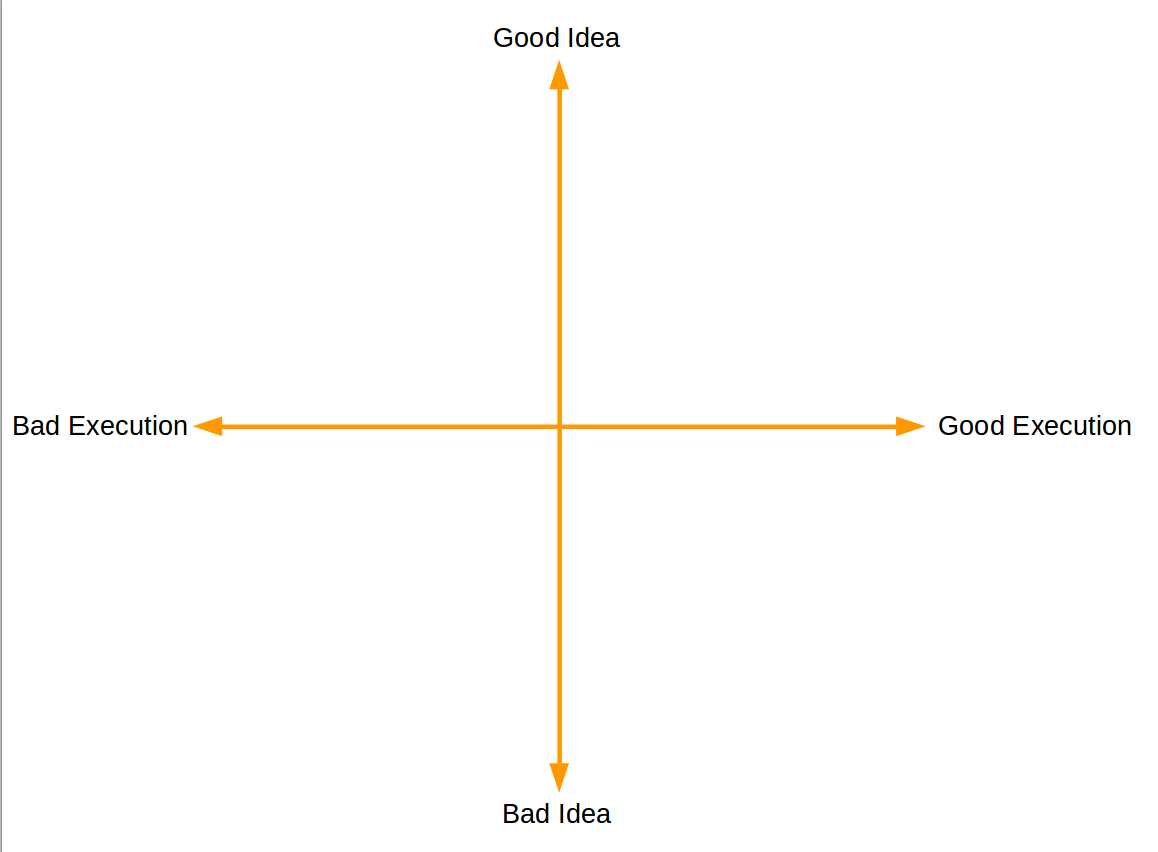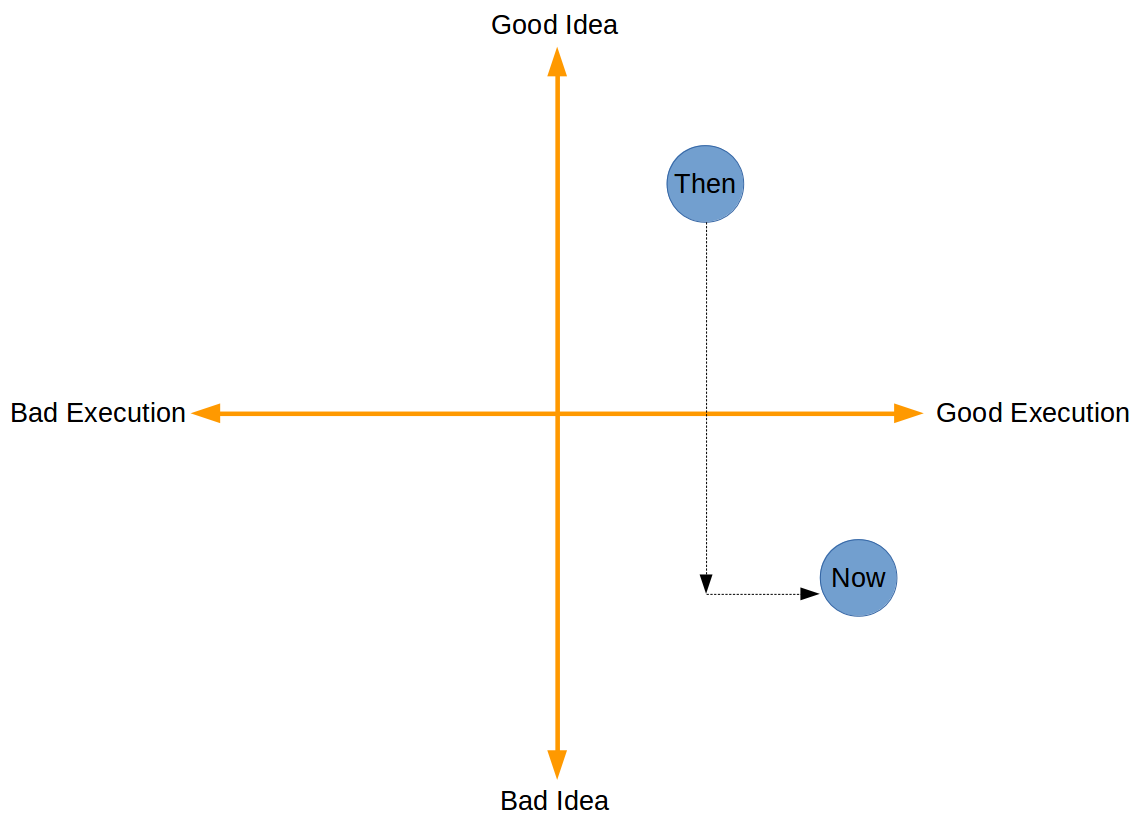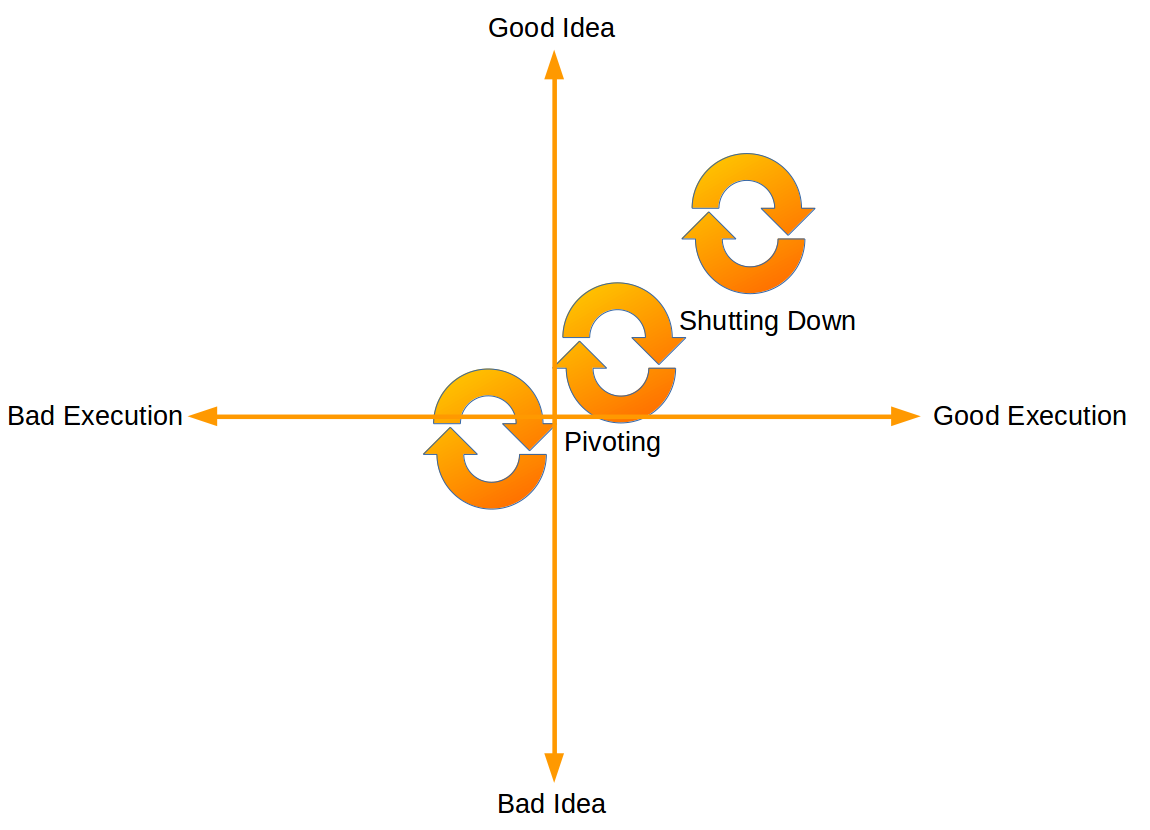
Image courtesy of congerdesign
Product Fitness
Innovation On Two Axis
Let's define a product's fitness using the following chart:

It's easy to think of the outliers where a good idea with good execution became successful or where a bad idea with bad execution failed miserably. Most other products fall somewhere in the middle hovering around average idea and execution. It also stands to reason that a product's fitness is dependant on the fitness of it's features. This measure can work for software as well as books, movies, and toothbrushes.
On Evaluating Product Fitness
Product fitness is based on expectation and timing.
Timing
Let's say you're a automobile designer and you have just designed the most amazing muscle car. Timing-wise no matter how great the idea or execution you find yourself stuck with a product and a dwindling market. The time for your muscle car was the 60s and 70s not now. If you had created it then you would have been the market leader. Now you fall more under bad idea good execution. Execution is also time dependant. It would have been impossible to match the execution of today's muscle cars during the 60s and times and regulations have changed so even executing like you did in the 60s would be impossible today.

Expectation
Expectation also plays a part in product fitness. Some people will go to the most prestigious five star restaurants and come away disappointed. Maybe they expected bigger portions for the price or more variety. Those people will put the meal in a different quadrant than those expecting a culinary concept perfectly executed.
On Creating A Fit Product
If creating a fit product depends on market timing and expectations then the most fit product you could create is one that is useful today and just beyond expectation. Just beyond the edge of expectation is something people can grasp and say "that's what I always wished a product would do". If you go too far then you lose people in the gap between what they expect and what you expect. That doesn't mean you shouldn't create something future-looking it means the default market for grand ideas is niche.
Managing Fitness
Like most things in life products have a life cycle.
We can think of product development as having the following phases:
- Creating - The magical time when an idea is first realized into something tangible. Release 0.1.
- Enhancing - The product is working as intended and it is time to grow it. Actively working to refine and improve. Release 1.0-x.0.
- Maintaining - We have reach a point of diminishing returns and are not actively improving the product. Bug fixes and minor improvements. Release x.32
- Pivoting - The product is no longer working as intended or the market has changed. Time to rethink our idea. Release 0.1 again.
- Shutting down - When the product is no longer useful we turn it off and find something else to do.
An illustration of the product life cycle phase would look like this:

The important thing about the life cycle from a product fitness perspective is where we can improve either the idea or the execution. Generally creating new products have the best chance for good ideas as they don't have to fight against their own legacy. Enhancing still gives us a chance to improve either the idea or the execution as it is an active process. Borrowing our car metaphor from earlier enhancing is like a car modder adding and tweaking and rebuilding to make things the original designer never imagined. Maintaining is more like a car owner getting the scheduled maintenance. Maintenance by definition does not actively improve so at best they are delaying the inevitable shutdown. Pivoting provides an opportunity to improve the idea or execution due to the fact it is like a restart. Finally shutting down frees up resources and gives us a chance to create something new again so there is the potential to drastically improve ideas or execution with all we have learned from the previous life cycle.

Now For The Hard Part
It's easy to spout ideas but much harder to make them actionable. Here's some suggestions for bringing this idea into practice:
- Plot your favorite books/movies/cars accordingly. Did they have a great idea but awful production value?
- Take a current feature in your product and plot where it is today. Then plot where you want it to be. What do you need to cover the distance between those points?
- Integrate it into user testing and interviews to find out if your users think the idea is as great as your team did. Did you design it for your users or your ego?
Have fun with it and hopefully it will help. Here's to good ideas well executed!
